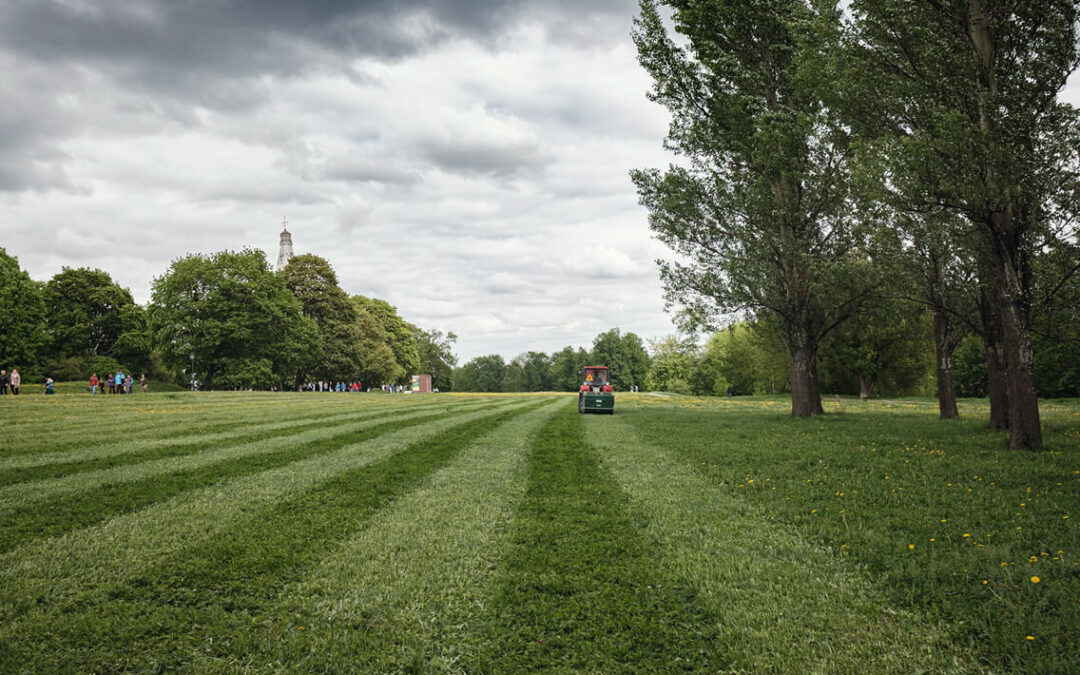Leveling your lawn mower is a crucial part of maintaining it. If you don’t do this regularly, you’ll end up with an uneven cut where there are “steps” in your grass. This looks unkempt and unattractive.
In addition, a poorly leveled deck will lead to problems down the road; your blade might wear faster, your power take-off system could fail, and your gas tank may leak.
Fortunately, modern riding mowers and zero-turn mowers make leveling your deck easy. You just follow these steps below to ensure you’re getting the best performance out of your ride.
Tools and Equipment
- Wrench Set – For tightening and loosening nuts and bolts.
- Tire Pressure Gauge – To check tire pressure.
- Gloves – To protect your hands from getting cut while working.
- Safety Glasses – To keep your eyes safe while working.
If your mower deck is not level, it can cause a number of problems. The following are signs that you need to level your mower deck:
- The mower cuts grass unevenly.
- The mower leaves clumps of grass behind.
- The mower scalps the lawn.
- The mower vibrates excessively.
1. Preparing the Lawn Mower
To start, you’ll first need to attain a level. If you don’t have one, you can buy one online or from a local store. You’ll begin by positioning your lawn mower on as level of a surface as you can find. Use your tool to check. Next, apply the brake, raise the cutting deck, and remove the spark plug. Now, it’s time to equalize the tire pressures. Take your pressure gauge and read the front tires. Make sure both are the same size. Once you’ve done that, you’re ready to go.
2. Inspecting the Blades
The next step in the leveling procedure is inspecting the blades. This ensures that the mowing width is correct and that the blades are straight and aligned correctly. There are several ways you can do this. Here are three methods:
- Measure the distance between the side edges of the blades. Do this by measuring from the center of one blade tip to the center of the opposite blade tip. You want to make sure that those distances are equal.
- Measure the distance between each blade tip.
- Rotate the mower 90 degrees and check both blade tips.
If the measurements differ, it could mean that either the blades aren’t straight or the cutting height isn’t set properly. Either way, you’ll need to adjust the settings accordingly.
3. Adjusting the Lawn Mower Deck Side-to-Side
The lawnmower deck needs to be adjusted to ensure it is parallel to the ground. This process helps you to level out the deck, making sure there are no bumps or dips.
Step 1 – Measure the distance between the front edge of the deck and the tip of the blade closest to the center line of the machine.
Step 2 – Measure the distance between where the rear edge of the deck meets the ground and the same spot on the opposite side of the deck. Write down the measurements.
Step 3 – Adjust the position of the blades so that the tips of the blades meet the measurement points. If you make adjustments too far away from the center line, you could damage the motor.
Step 4 – Repeat Steps 1-3 on the second side of the deck.
4. Adjusting the Lawn Mower Deck Front-to-Back
The next step in adjusting your lawn mowing equipment is leveling the deck. This includes adjusting the height of the mower deck from front to back, making sure it’s level. To do this you’ll want to use a tape measure to determine how high the front of the deck is compared to the rear. You’ll also want to make sure there aren’t any obstructions that could affect the accuracy of the measurement.
To adjust the height of the deck, start by positioning one of the cutting blades, so the tips are pointing forward and backward. Measure the distance from the ground up to where the tips meet. Repeat this process for each blade. Take note of the results.
Next, position the blade again, but this time, make sure the tips are pointed toward the front and back of your mower.
Again, measure the distance from the ground to where the tips meet, noting the results. Compare those numbers to what you measured earlier. If there’s a difference of more than 1/4 inch, you’re likely off center.
If the difference is less than 1/4 inch, repeat the steps above, checking the heights of both sides of the deck. Once you find the correct height, check the height of the opposite side of the deck. If the differences match, your deck is perfectly centered. Otherwise, you’ll need to adjust the height of the front of the deck.
What if you don’t need to make a change?
When measuring the blade tip height of your mower, it’s important to take into account how far the cutting edge is away from the ground. If it’s too close, you could end up damaging the grass because the blades won’t be able to penetrate the surface properly. On the other hand, if the blade isn’t high enough, the grass might just fall over and look unkempt.
So what does this mean for us? Well, it turns out that there’s no need to adjust anything – you’ve already got everything set correctly.
The first thing you’ll want to do is ensure that the wheels are level. We recommend doing this by setting the front wheel down onto a flat surface and making sure that the rear wheels are equally spaced apart.
Next, hold the handlebar steady and stand behind the machine. Then, place one foot on either side of the rear axle and use your hands to gently push the center of the mower forward and backward while looking at the bottom of the blade. As long as the blade is horizontal across both sides of the rear axle, you’re fine.
Now that you’ve taken care of the basic measurements, you can move on to checking the blade height.
Again, start by standing behind the mower and placing your feet firmly on either side of the axle. Hold the handlebar steady and lean forward slightly.
Now, tilt the handlebar downward to bring the blade closer to the ground and repeat the process described above. Once you’ve determined where the blade needs to be positioned, you can proceed to inflate the tires to equal pressure.

